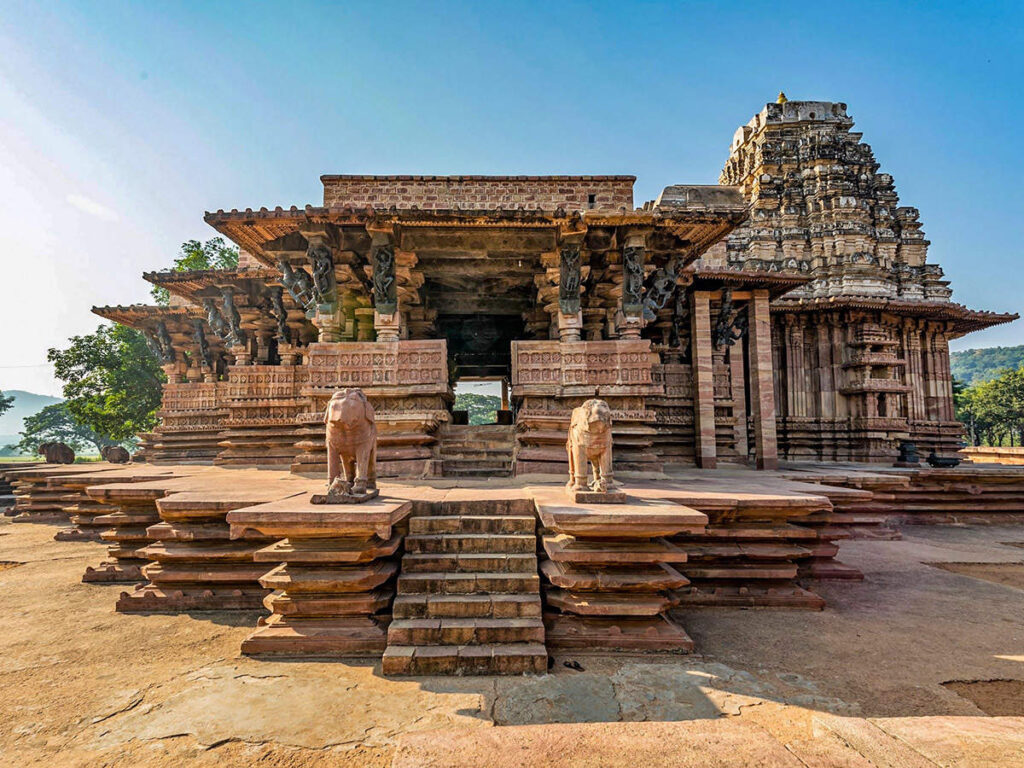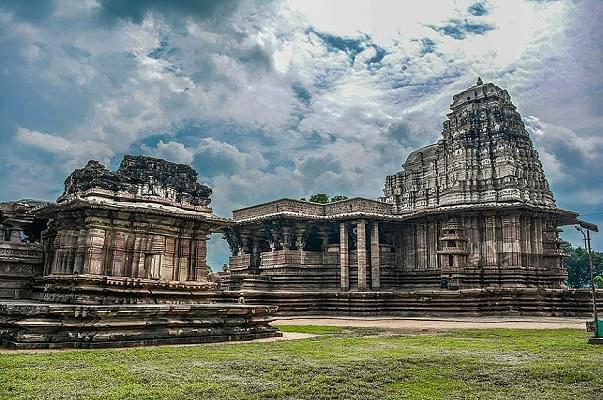The 13th-century Ramappa temple in Palampet, Telangana is now a World Heritage Site. After being on UNESCO’S tentative list for the tag of World Heritage site since 2014, the Rudreswara Temple also known as Ramappa temple is now finally inscribed as a location with an “outstanding universal value” by the United Nations organization.
Despite being Indian government’s only nomination for the UNESCO World Heritage site tag for the year 2019, Ramappa temple finally made it to the 2021 UNESCO’s World Heritage List. The decision to inscribe this 13th-century temple was taken at the 44th session of the World Heritage Committee of UNESCO held on Sunday in China.
It gives me immense pleasure to share that @UNESCO has conferred the World Heritage tag to Ramappa Temple at Palampet, Warangal, Telangana.
On behalf of the nation, particularly from people of Telangana, I express my gratitude to Hon PM @narendramodi for his guidance & support. pic.twitter.com/Y18vDBAJKS
— G Kishan Reddy (Modi Ka Parivar) (@kishanreddybjp) July 25, 2021
World Heritage Site tag
The World Heritage site is given to a location that holds a universal value which implies cultural significance. World Heritage is the designation for places on Earth that are of outstanding universal value to humanity and as such, have been inscribed on the World Heritage List to be protected for future generations to appreciate and enjoy.
The United Nations Educational, Scientific and Cultural Organization gives the tag to a place after selecting them on the basis of cultural and natural criteria. To be included on the World Heritage List, the sites must be of outstanding universal value and meet at least one out of ten selection criteria.
The Ramappa Temple and UNESCO tag
The Ramappa temple in Telangana became the 39th site in India to be inscribed in the world heritage list. During the selection procedure on Sunday which was held in China, over 17 of the 21 member nations supported the inscription of the Indian temple that is named after its architect, Ramappa.
What does the tag mean?
A World Heritage Site designation is bestowed on locations that possess universal cultural significance. This represents a commitment to preserve such sites for appreciation and learning for our future generations. The United Nations Educational, Scientific and Cultural Organization (UNESCO) gives away this tag based on rigorous cultural and natural criteria. The Ramappa temple’s nomination as the 39th World Heritage Site in India took place in China, where over 17 out of 21 member nations supported this Indian temple. This is the only temple named after the architect who designed it, Ramappa.
Certain questions arise in the mind of readers. Like, what are benefits of including this temple in the list of UNESCO heritage? Is UNESCO now responsible for its functioning? Is UNESCO is going to provide financial assistance for maintenance?
So to enrich reader, benefits of listing in the list of UNESCO heritage are:
- Being listed as a UNESCO World Heritage Site brings global recognition and prestige. It enhances the cultural significance and visibility of the site, attracting tourists, researchers and scholars from around the world.
- UNESCO designation significantly boosts tourism, leading to economic benefits for the local community. Revenue increases through tourism-related activities such as accommodations, restaurants, transportation and souvenir sales, contributing to the local economy.
- UNESCO World Heritage Sites serve as platforms for cultural exchange and understanding. They promote awareness of diverse cultures, histories and traditions, fostering appreciation and respect for cultural diversity on a global scale.
- Many UNESCO World Heritage Sites are not only culturally significant but also ecologically important. Listing can lead to improved environmental protection measures, including habitat conservation, sustainable tourism practices, and efforts to mitigate the impacts of climate change and pollution.
- UNESCO support often includes capacity building and technical assistance for site management. This helps local authorities develop effective strategies for the sustainable management and preservation of the heritage site.
Glorious History of Ramappa Temple

The Rudreshwara Temple also known as the Ramappa Temple, was constructed back in the 13th century. This is dedicated to Lord Shiva, Vishnu and Surya. It’s a marvel of Kakatiya architecture and craftsmanship located in Palampet, Telangana. The temple is known for its intricate carvings, particularly those depicting the Kakatiya dynasty’s cultural and historical motifs. It’s one of the prime examples of the rich heritage and architectural brilliance of the Kakatiya dynasty in the region. It was given UNESCO World Heritage site tag on 25 Jul 2021 during the 44th session of the World Heritage Committee. The temple was the sole nominee from the Indian Government back in 2019 but finally got the tag in 2021.
Indian Prime Minister Narendra Modi congratulated on the event, emphasising the Ramappa Temple’s role in excelling in the exceptional craftsmanship by the Kakatiya dynasty. He encouraged the common public to go and witness this iconic temple by themselves. The Kakatiyan sculptor’s influence is evident in the unique technology, style and the decoration of the temple’s complexes. G Kishan Reddy, the Minister of Culture and Tourism, extended his thanks to PM Narendra Modi on behalf of the people of Telangana and the whole nation for his unending support and guidance throughout. He also applauded the entire team of the Archaeological Survey of India.
Ramappa Temple Architecture: Ancient Advanced Techniques
The temple’s roof is upheld by pillars meticulously positioned on a six-foot tall platform shaped like a star. Remarkably lightweight bricks form the roof, so light that they have the ability to float on water. Perhaps most astonishingly, certain spots on the pillars produce musical tones when struck, leaving visitors in awe. Established with sandbox technology in the early 13th century, the temple’s foundation enabled it to withstand a powerful earthquake in the 17th century. Even today, scientists remain perplexed by the mysterious technology’s enduring effectiveness. The Italian explorer and merchant Marco Polo described the temple as the “brightest star in the galaxy of the mediaeval temples of the Deccan.”

